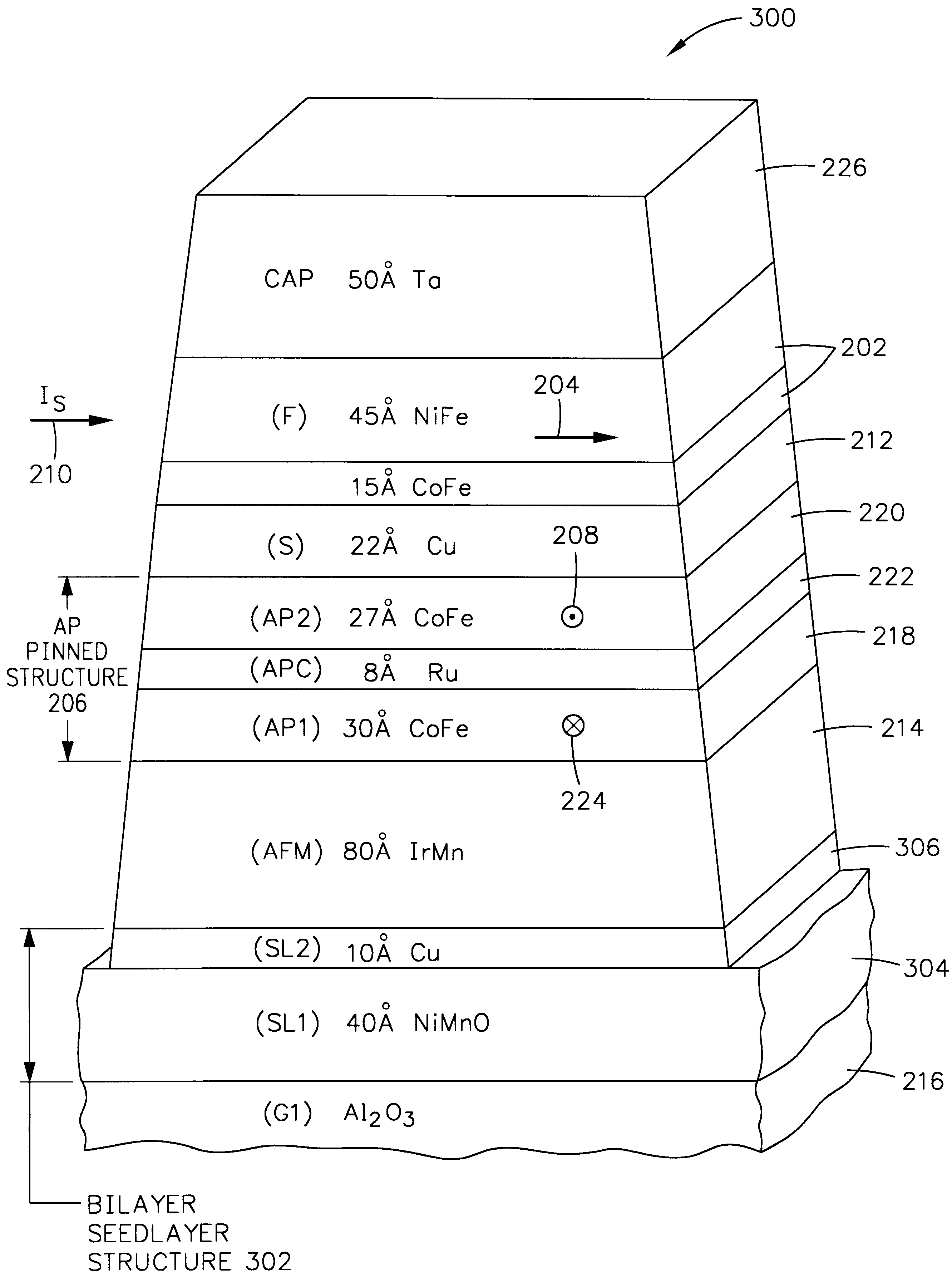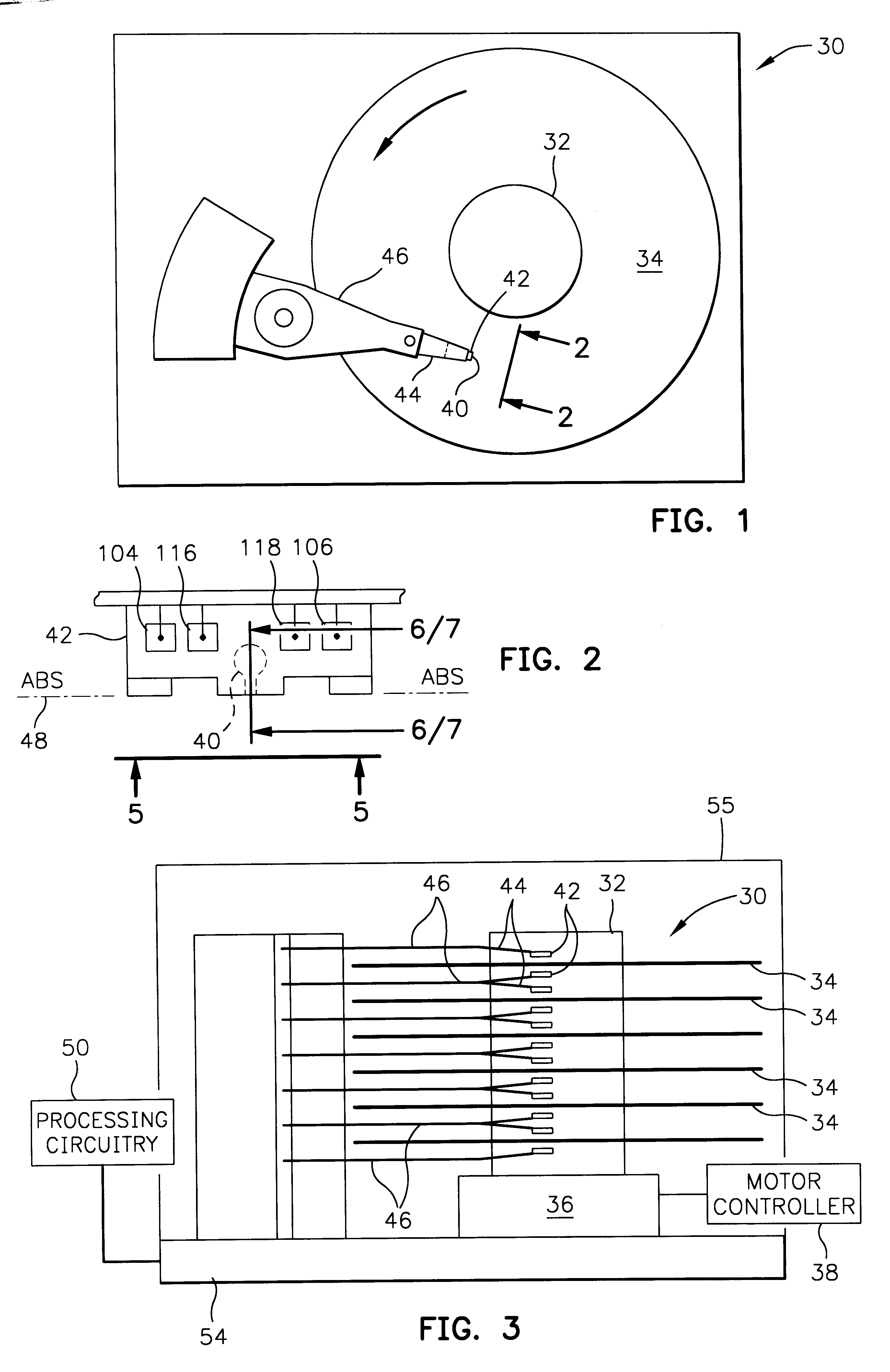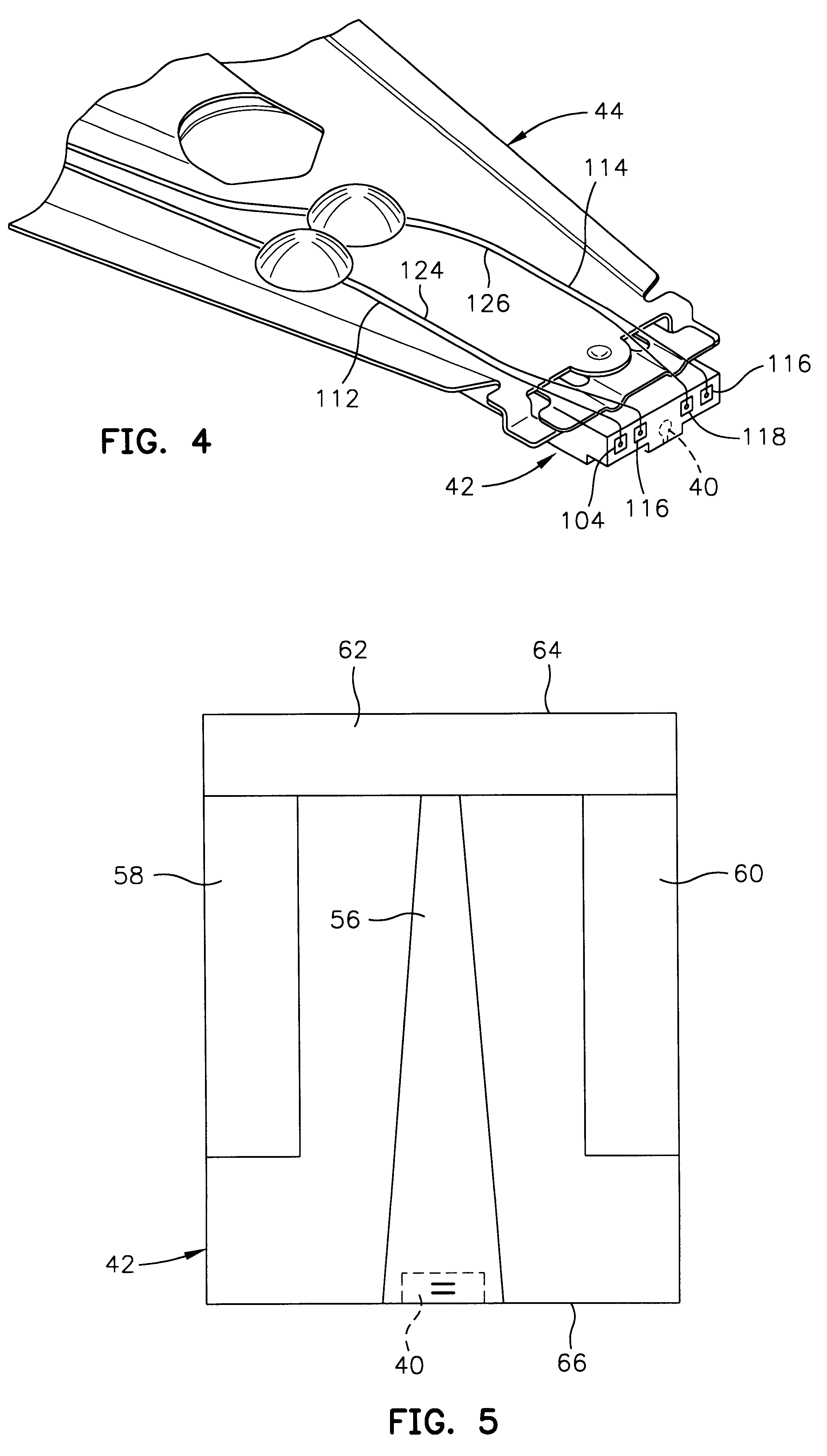Seed layer structure for spin valve sensor
- Summary
- Abstract
- Description
- Claims
- Application Information
AI Technical Summary
Benefits of technology
Problems solved by technology
Method used
Image
Examples
example 2
First Embodiment of Invention
The spin valve sensor 300 in FIG. 13 is a first embodiment of the present invention. The spin valve sensor 300 is the same as the spin valve sensor 200 in FIG. 12 except for a seed layer (SL) structure 302 that is located between the first read gap layer 216 and the pinning layer 214. The seed layer structure 302 has a first seed layer (SL1) 304 comprising a metallic oxide and a second seed layer (SL2) 306 comprising a nonmagnetic metal. The first seed layer 304 is located on and interfaces the first read gap layer 216 and the second seed layer 306 interfaces and is located between the first seed layer 304 and the pinning layer 214. In this example, the first seed layer 304 was 40 .ANG. of nickel manganese oxide (NiMnO) and the second seed layer 306 was 10 .ANG. of copper (Cu).
After resetting the pinning layer 214, as discussed hereinabove, the magnetoresistive coefficient (dr / R) of the spin valve sensor 300 was 8.24% and the ferromagnetic coupling field...
example 3
The spin valve sensor 400 shown in FIG. 14 is the same as the spin valve sensor 200 shown in FIG. 12 except the pinned layer structure is a single ferromagnetic pinned layer 402 which, in this example, was 24 .ANG. of cobalt iron (CoFe). The magnetic moment 404 of the pinned layer 402 is shown perpendicular to and toward the ABS. It is the relative rotation between the magnetic moments 204 and 404 that determines the magnetoresistance (dr) of the read sensor 400. This example has no seed layer between the pinning layer 214 and the first read gap layer 216.
After resetting the pinning layer 214, as discussed hereinabove, the magnetoresistive coefficient (dr / R) was 4.0% and the ferromagnetic coupling field (H.sub.F) was 8 Oe. It is an object of the present invention to improve this magnetoresistive coefficient (dr / R).
example 4
Second Embodiment of Invention
The spin valve sensor 500 in FIG. 15 is a second embodiment of the present invention. This spin valve sensor is the same as the spin valve sensor 400 in FIG. 14 except a seed layer structure 502 is employed between the first read gap layer 216 and the pinning layer 214. The seed layer structure 502 comprised a first seed layer (SL1) 504 of a metallic oxide and the second seed layer (SL2) 506 was a nonmagnetic metal. In this sensor the first seed layer 504 was 40 .ANG. of nickel manganese oxide (NiMnO) and the second seed layer 506 was 10 .ANG. of copper (Cu). The first seed layer 504 interfaced and was located on the first read gap layer 216 and the second seed layer 506 was located between and interfaced each of the first seed layer 504 and the pinning layer 214.
After resetting the spin valve sensor 500, as discussed hereinabove, the magnetoresistive coefficient (dr / R) was 5.6% and the ferromagnetic coupling field (H.sub.F) was 0.1 Oe. The magnetoresis...
PUM
 Login to View More
Login to View More Abstract
Description
Claims
Application Information
 Login to View More
Login to View More - R&D
- Intellectual Property
- Life Sciences
- Materials
- Tech Scout
- Unparalleled Data Quality
- Higher Quality Content
- 60% Fewer Hallucinations
Browse by: Latest US Patents, China's latest patents, Technical Efficacy Thesaurus, Application Domain, Technology Topic, Popular Technical Reports.
© 2025 PatSnap. All rights reserved.Legal|Privacy policy|Modern Slavery Act Transparency Statement|Sitemap|About US| Contact US: help@patsnap.com



